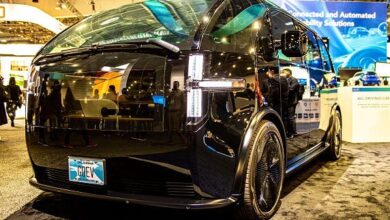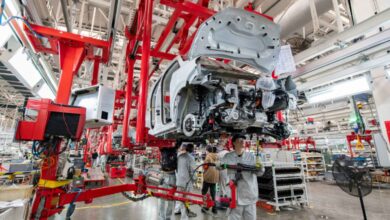U.S. Tariffs on Chinese EVs Are a High-Stakes Gamble

The Biden Administration’s China policy has emerged over time to reveal an approach that is both harsh and diplomatic, combining high tariffs, export control restrictions, and bipartisan attacks on China’s intentions with a return to diplomacy and frequent visits of cabinet members to Beijing who articulate a U.S. China policy that is both self-interested and principled. This dichotomy was apparent this month with the first ever high-level dialogue on AI between U.S. and Chinese officials in Geneva and the announcement on May 14 of significant new tariffs on Chinese goods, including a 100 percent tariff on electric vehicles.
This two-pronged approach is reasonable given the stakes at hand. Moreover, it is revealing that the U.S. seeks dialogue and engagement in areas where it still leads but uses harsher policies in sectors where China already has the upper hand. The U.S. government’s defining principle on China, which Xi Jinping has resisted, is that of competition. This approach starts from the assumption that the U.S. and China are competing in every realm, but that each sector needs a targeted strategy to fit the nature and context of competition. America’s foreign policy toward China can no longer be simplified as “engagement” or “containment.” It depends on the sector. Artificial intelligence, where America still leads, lends itself to engagement and dialogue. On green energy, where China is clearly dominant, the U.S. turns to containment.
In the automotive industry, Biden’s high tariffs are intended to shut Chinese cars out of the U.S. market for the foreseeable future. It is a do-or-die moment for the industry, which contributes 3 percent of GDP and employs, directly or indirectly, nearly eight million American workers, many who live in battleground states that will be key to determining the winner of the next presidential election. It’s notable that this sector was once the quintessential area of economic engagement and “win-win” economic cooperation between the two countries. China’s industrial policy long required that foreign automotive companies invest in China only through joint ventures, so that Chinese state-owned enterprises could absorb superior foreign technology and management skills. Companies such as General Motors and Germany’s Volkswagen did very well in China as China’s middle class boomed and hundreds of millions of new drivers bought their first personal vehicles. However, China’s ambitions in the industry were never hidden. Its industrial policy was guided by the long-term goal of producing its own national champions—Chinese brands that could eventually go head-to-head against the foreign brands that were ensconced in China via the joint venture model. In 2009, after many decades of unsuccessful “catching up,” the Chinese government announced a new strategy of leapfrogging over the internal combustion engine technology that western firms dominated to focus on electric vehicles in the hope that Chinese firms could finally become leaders in the industry through mastery of a new technology.



